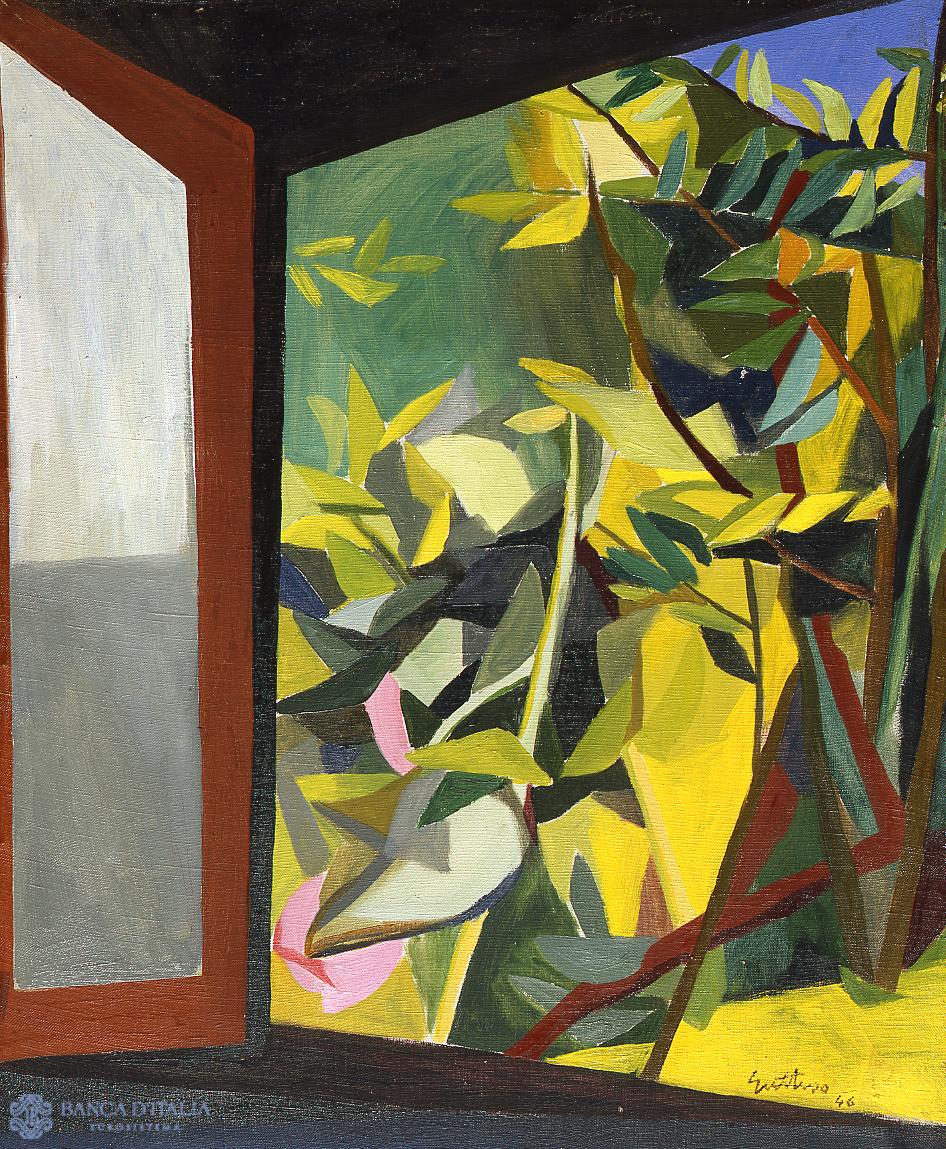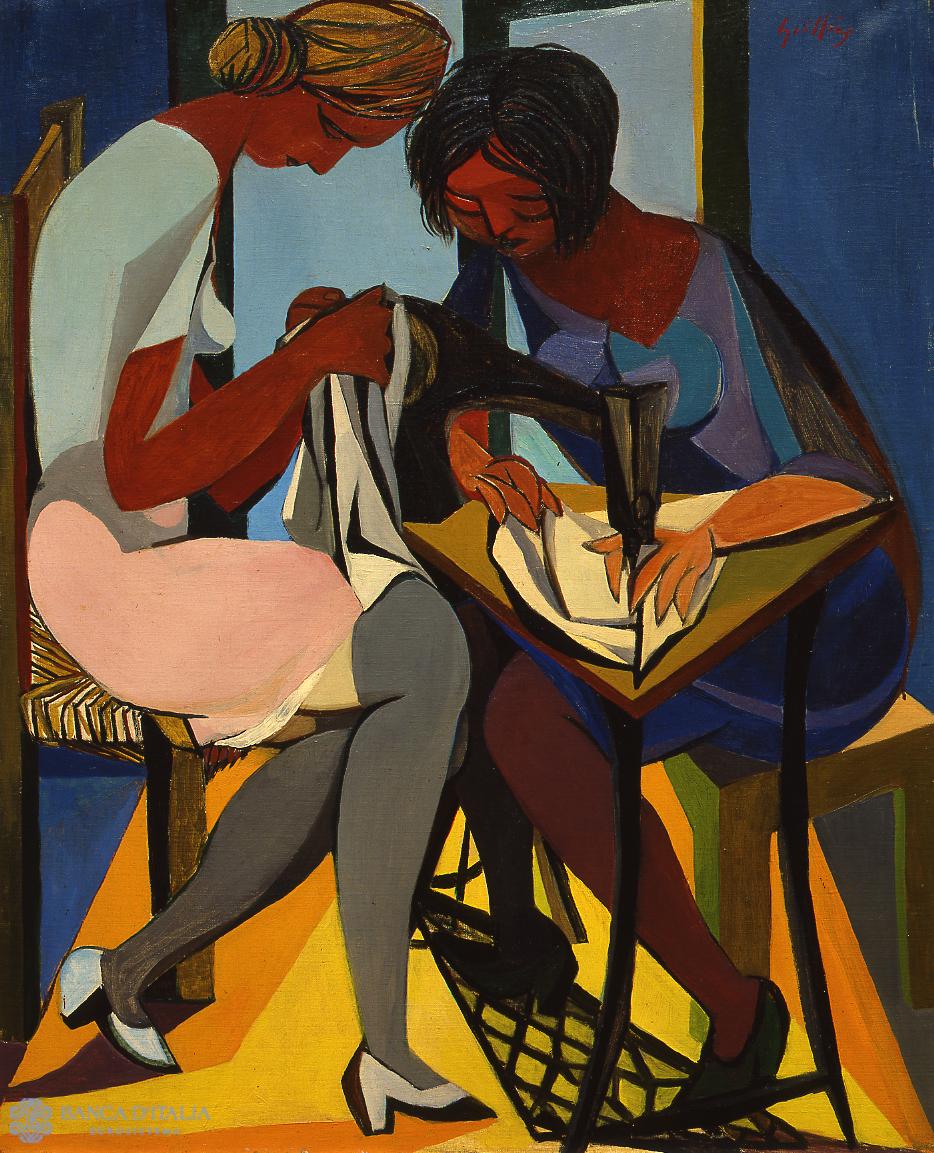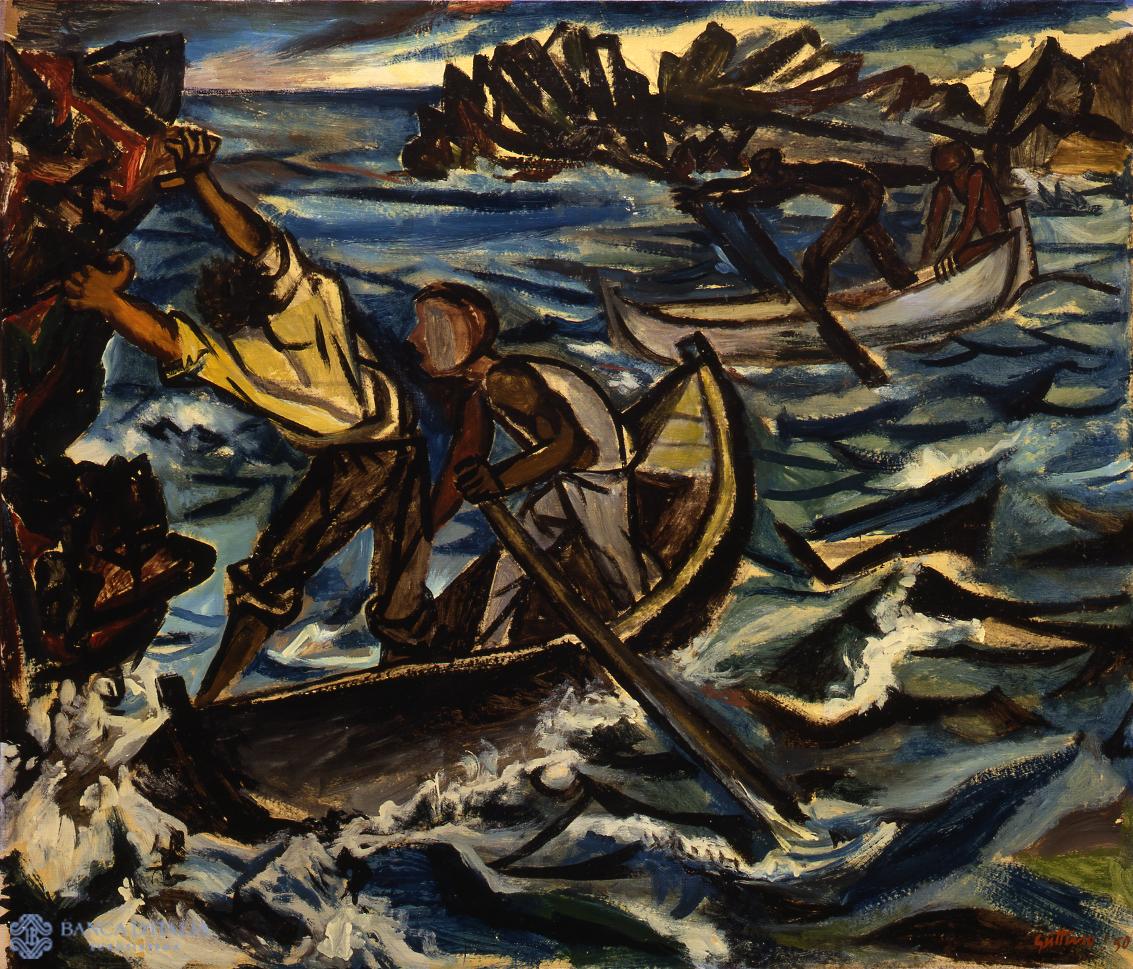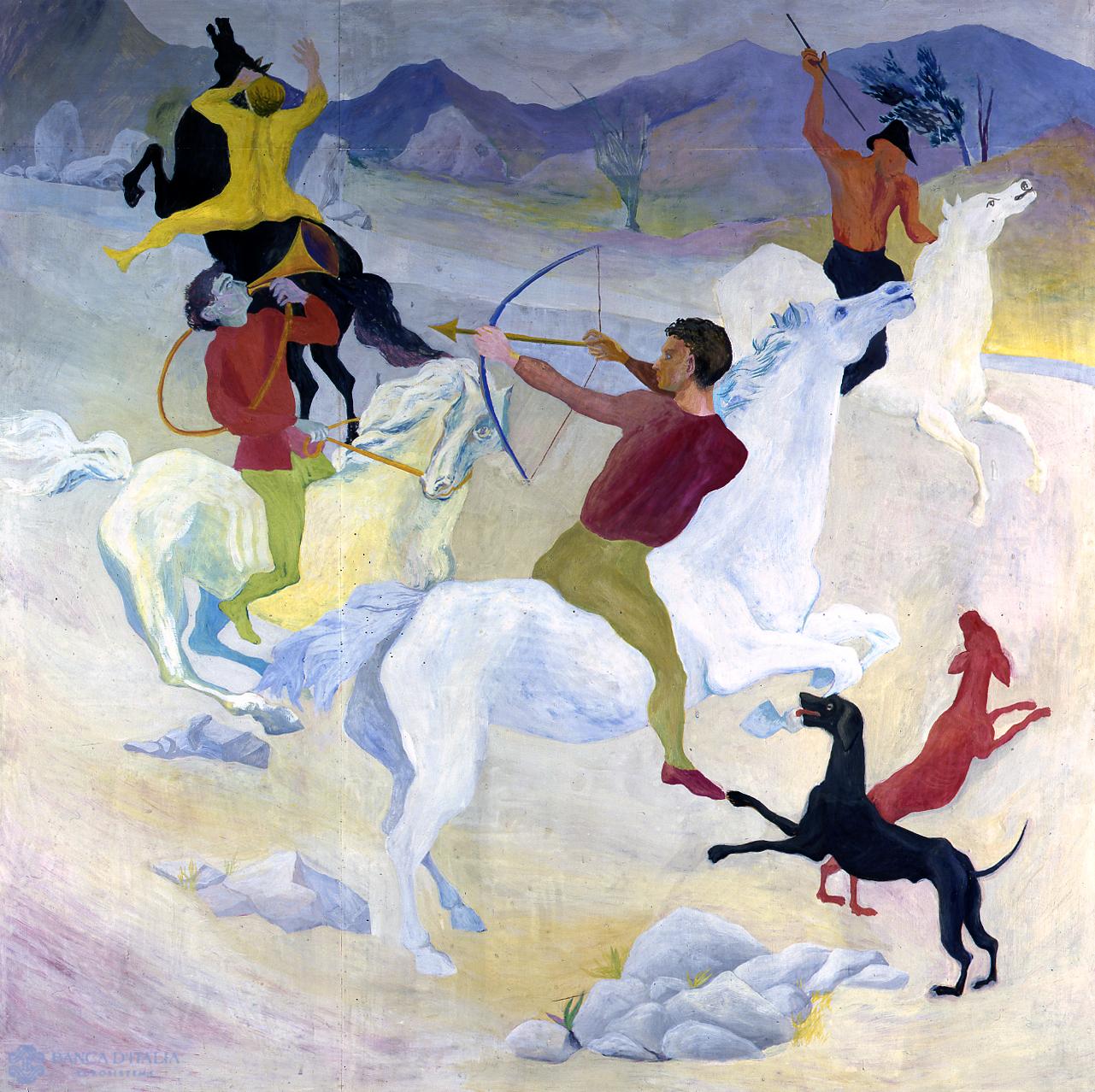Renato Guttuso was born on 26 December 1911 in Bagheria, near Palermo. After finishing high school, he enrolled in the Law Faculty but soon dropped out to devote himself entirely to his painting – in which he had been interested since a very young age, under the guidance of Pippo Rizzo, with whom he shared exhibitions, including the first and the second Quadriennale romana in 1931 and 1935.
From 1932, he also exhibited his work with success in Milan, where he was doing his military service. Halfway through the decade, he settled in Rome, where he became close to Cagli, Mafai and the other very young artists of the Scuola Romana. At the end of the 1930s, he abandoned the fantastic, rigid and neo-primitive style of his artistic beginnings, and expanded his relationship with reality, supposing the birth of a “new realism”, which soon assumed a markedly expressionist nature in his work.
During the war he was in the ranks of the partisans, and afterwards, together with some other comrades he founded the Fronte Nuovo delle Arti, a group which looked to Picasso and European neocubism as a formal yardstick and with whom he exhibited in Milan and at the Venice Biennale of 1948. When the Fronte disbanded, Guttuso turned decidedly towards art with social content and political themes, becoming the leader of the socialist realism movement. The great works of these years, duly exhibited with great success at the Venice Biennales (in 1950, Occupazione delle terre incolte in Sicilia; in 1952, Battaglia al Ponte dell’Ammiraglio; in 1954, Boogie Woogie; in 1956, La Spiaggia), became emblematic of his artistic and political beliefs.
In the meantime, alongside his painting, he continued to work intensively for the theatre, and was prolific as a critic and theorist. Starting mainly from the 1960s there were frequent celebrations of his work at home and abroad, where leading museums exhibited large collections of his paintings. He was elected a senator representing the Italian Communist Party, to which he had contributed ideas and proposals since the Fascist period, and then as a member of the party’s central committee. Active right up until the last years of his life, he died in Rome in 1987.
Renato Guttuso
Renato Guttuso (Bagheria 1911 - Rome 1987)
20th century AD

Compiler
Fabrizio D'Amico





